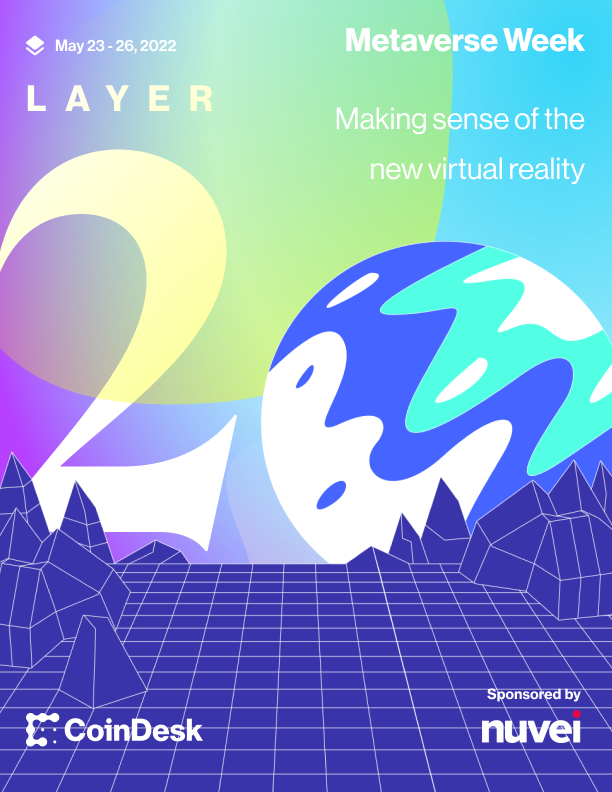In 2014, after seeing Satoshi Nakamoto make bitcoin (BTC) a uniquely digital currency, Brooklyn, N.Y.-based artist Kevin McCoy became “obsessive” looking for a way to do the same with artwork.
This piece is part of CoinDesk's Metaverse Week
As a digital artist, McCoy felt sidelined by galleries and museums, in part due to difficulties of physically exhibiting works that are native to a virtual space.
“So the strategy that many digital artists did back in the day, myself included, was to try to make some physical output from your digital work,” he said. “You’d turn it into a sculpture, you’d make some kind of print, or you’d come up with a robot or whatever. You turn it into a thing in some hopes of being able to participate in the art market.”
Eight years later, McCoy recalls this story while standing in front of nine translucent LG OLED screens displaying his non-fungible token (NFT) art, “Quantum Leap: Dark Star,” made in collaboration with his wife, Jennifer McCoy.
“Quantum Leap” is a generative, code-based NFT series of eight tokens that represents the life cycle of the stars, changing forms and colors over a three-year period. The series was inspired by his 2014 work “Quantum,” the first artwork tokenized on a blockchain.
“Nobody really understood the idea of a tokenized digital artwork [and] using the blockchain as an ownership record and provenance back then,” McCoy said. “It was a real struggle.”
Sotheby’s (BID) touted “Quantum” as “universally regarded as the first NFT ever created,” and sold it at auction last June for $1.47 million. The McCoys have installed it at the center of their presentation at the Frieze Art Fair in New York.
“NFTs have invented this new form of ownable digital property, and that idea is just too important to ever go away,” he said.
NFTs as an on-ramp to the metaverse
Having seen his original vision for tokenized ownership of art metamorphose into what is today’s non-fungible tokens, McCoy sees NFTs being the on-ramp for a new way of life.
“As the world continues to digitize more and more and get virtualized more and more, the role of digital unique property is just going to increase, exponentially. So we’ll be living in that world,” he said.
Read More: How to Make It in the Metaverse
McCoy envisions a world in five to 10 years where software interaction with tokens is going to be more robust and dynamic than ever.
“The metaverse is going to be powered by game engines,” he said. “And connecting your wallet and your tokens to a game-engine environment is what that ground-level tech is going to be.”
McCoy compares this point in the development of the metaverse to the gaming revolution.
“The metaverse of today will be the original Nintendo of 10 years from now,” said McCoy, describing the watershed moment when Nintendo launched Mario Bros in 1985. The game about two plumbers navigating New York City’s labyrinthine underground pipes eventually spawned "Super Mario Bros," a full-length movie and a cartoon series.
“The original Mario Bros … It’s like people’s cultural touchstones.”
More from Metaverse Week:
As contemporary artist Krista Kim sees it, there are too many corporate executives conceiving these new virtual worlds and not enough genuine creatives.
Fundamentally, the "metaverse" is a game – but one with real consequences and opportunities.
The future possibilities of the metaverse are presumably limitless, but is there anything you can do in the metaverse right now?
/arc-photo-coindesk/arc2-prod/public/LXF2COBSKBCNHNRE3WTK2BZ7GE.png)

:format(jpg)/www.coindesk.com/resizer/3izoRdQtekHkZr4qBlsWEr8xADg=/arc-photo-coindesk/arc2-prod/public/AUJXFZK77BFI3KNBWE5ORCE5XI.png)